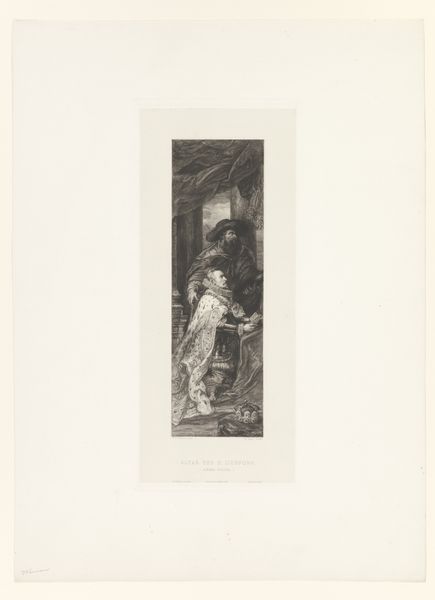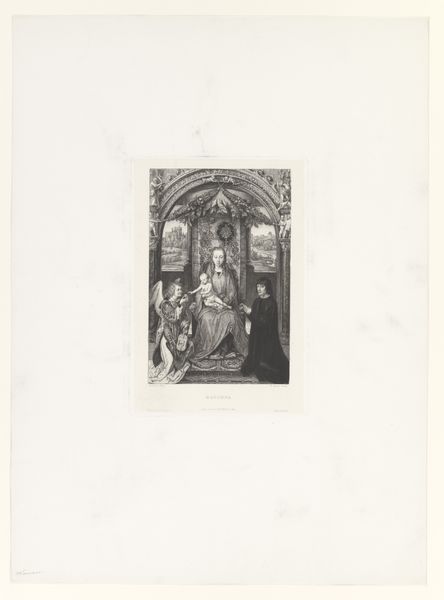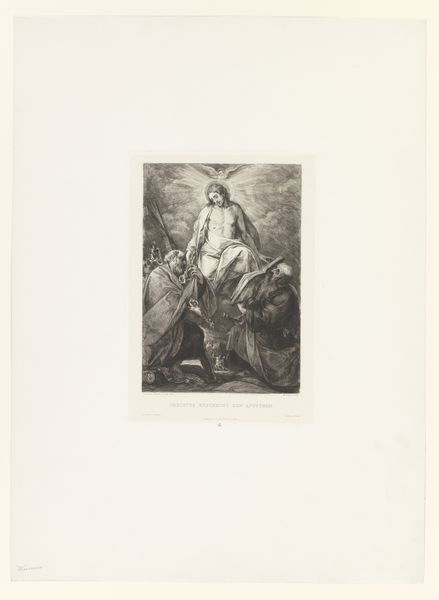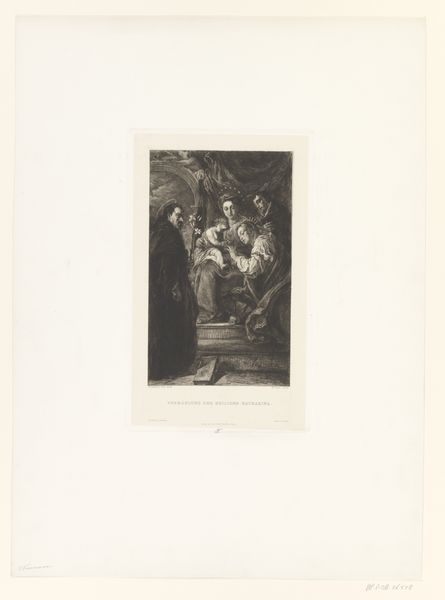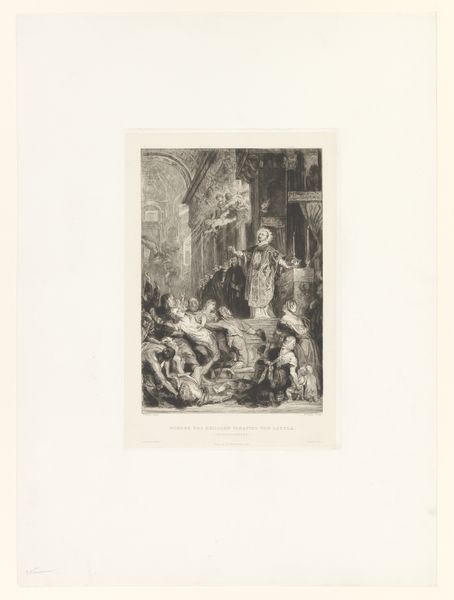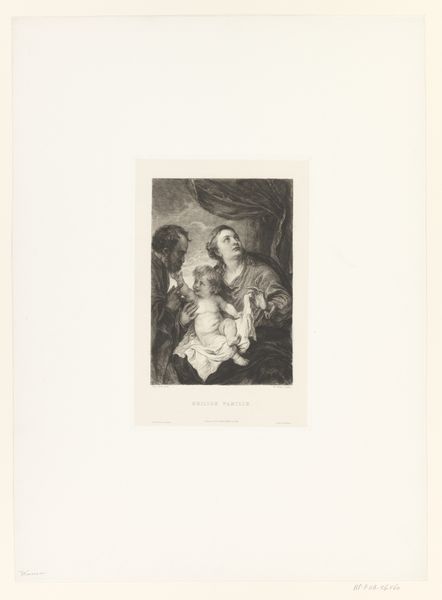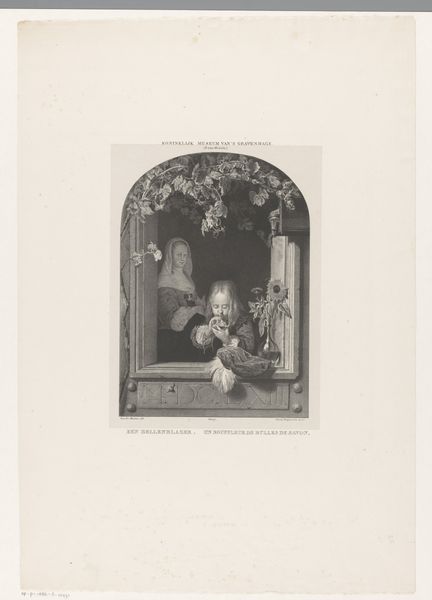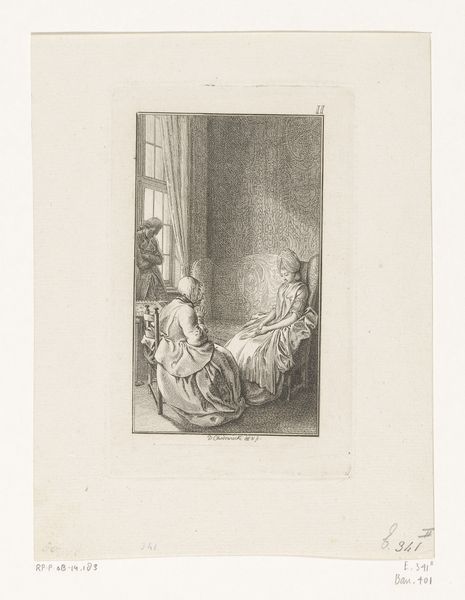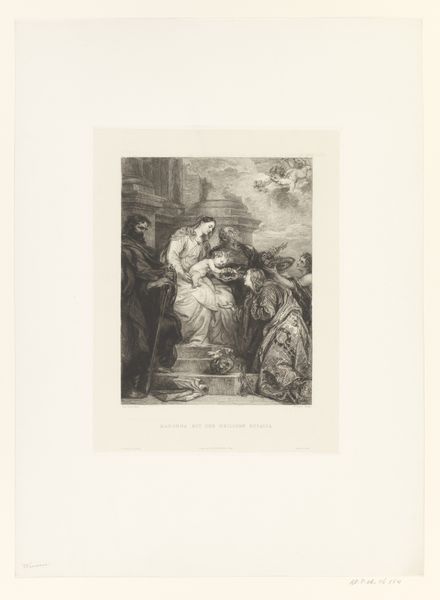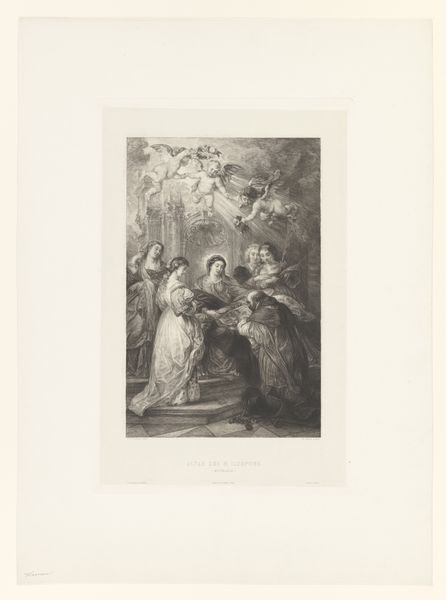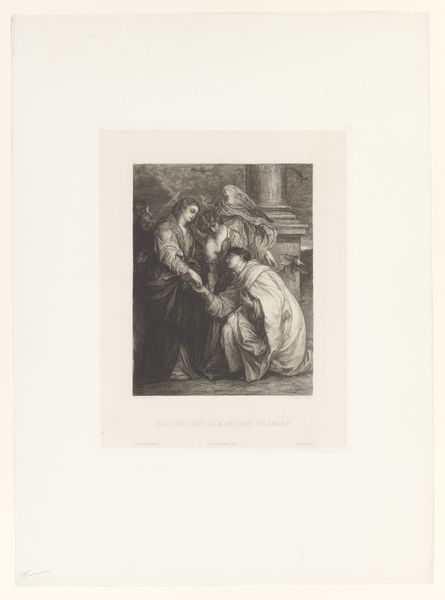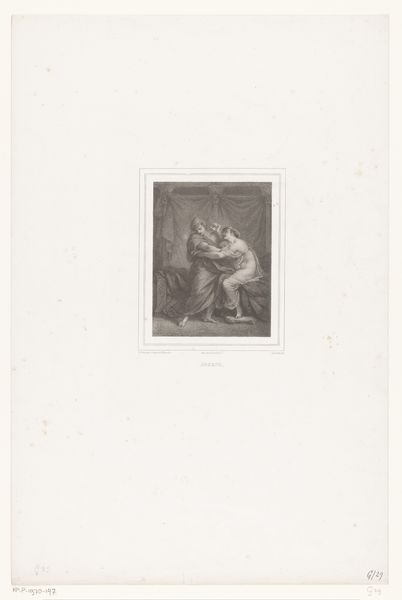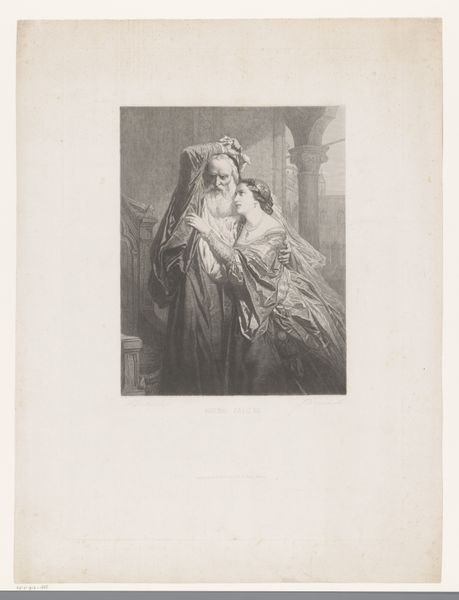
Rechtervleugel van het altaar van Ildefonso: Isabella Clara Eugenia van Spanje met haar patroonheilige Elisabeth van Hongarije 1861 - 1889
0:00
0:00
print, engraving
#
portrait
# print
#
figuration
#
history-painting
#
academic-art
#
engraving
Dimensions: height 458 mm, width 197 mm
Copyright: Rijks Museum: Open Domain
William Unger made this engraving, "Rechtervleugel van het altaar van Ildefonso," employing techniques of cutting lines into a metal plate, to reproduce a section of an altarpiece. Engraving is a labor-intensive process. Unger would have used specialized tools to meticulously carve the image into the metal, building up the image through a network of fine lines. The quality of the line is everything in a work like this. It’s a world away from painting; the artist is thinking sculpturally, even architecturally. The medium is significant: printmaking allowed for wide distribution of images and artistic ideas in the 19th century, in a world before photography. Unger’s skill in translating the qualities of painting into the graphic language of engraving speaks to the hierarchies of art at that time, and to the mechanical means available to challenge that hierarchy. Considering the materials, making, and its context, it is possible to understand the full meaning of an artwork like this and challenge distinctions between fine art and craft.
Comments
No comments
Be the first to comment and join the conversation on the ultimate creative platform.
